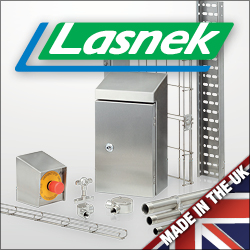
Posted to News on 1st Jul 2016, 14:30
ESAB plasma cutting system used in urgent bridge repair project
A state-of-the-art ESAB Suprarex SXE 5000 plasma cutting system played a crucial role in enabling Watson-Towers Ltd to meet an urgent requirement for structural steel repair plates for the emergency repair of the Forth Road Bridge, which had to be closed with no notice when cracks were discovered in the structure. Within 24 hours of the initial enquiry, the steel companies had cut and delivered plates to the fabricator ready for repairing the bridge. Two key factors enabled the companies to meet this tight deadline: Watson-Towers' stocks of the correct grade of steel, and the ESAB machine's capability to profile and bevel the plates in one go, as manually bevelling the plates would have taken too long.
Watson-Towers and Cairnhill Structures, sister companies that are both part of the Watson-Towers Group, are often called upon to meet tight deadlines for critical projects. Recently the companies responded to an urgent request for steel plates to repair the Lamington Viaduct, which carries West Coast Main Line trains over the River Clyde, and they have also supplied fabrications within 36 hours of an enquiry for repairs to a nuclear power plant. When cracks were found in the Forth Road Bridge, Watson-Towers and Cairnhill Structures met the initial need and then continued to supply more profiled and bevelled plates when further cracks were found in the bridge. Watson-Towers Ltd is a steel stockholder with facilities for cutting and profiling plates, while Cairnhill Structures is a specialist fabricator with design expertise. When necessary, such as the Forth Road Bridge repair project, the companies pool their skills to ensure that the customer's requirements are met on time, cost effectively, and with all applicable quality standards adhered to.
The companies have been using ESAB cutting and welding equipment for some 20 years and now use almost exclusively ESAB equipment and consumables. An ESAB Suprarex SXE 5000 plasma cutting system is the most recent acquisition, and this played a crucial role in the Forth Bridge Project. Other ESAB automated cutting systems - both oxy-fuel and plasma - were also employed in order to meet the delivery timescale. Most importantly, the Suprarex is equipped with a rotating cutting head that enables plates to be profiled and bevelled ready for welding. This avoids the time-consuming and costly alternative of bevelling the plates manually after profiling; if manual bevelling had been required for the Forth Bridge Project, it is unlikely that delivery could have been made within 24 hours.
Drawings for the individual profiles were received as DXF files, which Watson-Towers' engineers marked up ready for the profiles to be programmed into the CNC cutting machine's controller via the ESAB Columbus cutting and nesting software. Dozens of profiles were required, most of which were one-offs, but the Columbus software ensured that the programming stage of the project was as straightforward and fast as possible.
ISO 9001 quality assurance procedures
Watson-Towers was the only Scottish steel stockholder to have the necessary quantity of the right grade of Western European origin S355J2+N steel, which was a key factor behind the company winning the contract (the company typically stocks around 1000 tonnes of steel). Various thicknesses were required for the Forth Road Bridge repairs, ranging from 12mm to 25mm thick, and the largest profile was approximately 2.5m long by 1.6m wide. The ESAB Suprarex plasma cutting system produces a very clean cut but, in line with its ISO 9001 quality assurance procedures, Watson-Towers dressed all of the profiles by grinding.
Over the years Watson-Towers and Cairnhill Structures have established a reputation for quality and an ability to tight deadlines reliably. Holding substantial stocks of steel is a great help, but so is having state-of-the-art cutting technology that enables turnaround times to be short and quality to be maintained. When the Forth Road Bridge was closed shortly before Christmas 2015, Watson-Towers was one of only a few companies capable of delivering what was required. Time was of the essence because closure of the Forth Road Bridge meant that a 20-minute trip from Dunfermline to Edinburgh became a 3-hour crawl, causing huge disruption and costs for local businesses and families, as well as people and freight travelling longer distances who would ordinarily cross the Forth at this point. Thanks in part to the efforts made by Watson-Towers - and the ESAB Suprarex plasma cutting system - the Forth Road Bridge was reopened a week earlier than the initial estimate, despite poor weather hampering repairs.
Steven Hendry, a Director at Watson-Towers, comments: "ESAB has always provided us with exceptional service and technical support, and their equipment is very advanced. When we invested in the Suprarex we could see the benefits of the bevel cutting head, and the Forth Road Bridge project illustrates this perfectly. Compared with applying the edge preparation manually, the automated bevelling saved a huge amount of time and ensured that we could make the delivery on time. Even when the machine was required to work 24 hours flat-out, it never missed a beat."
More information about automated plasma and oxy-fuel cutting systems is available free of charge from ESAB; email [email protected], or visit www.esab.com.


















